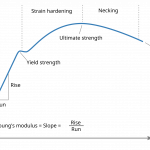
Key Takeaways
- Sintering transforms raw powdered materials into solid forms by altering their atomic structure, directly impacting strength, density, and durability.
- Changes at an atomic level during sintering can determine product quality, making monitoring and testing critical for precision applications.
- Impulse Excitation Technique (IET) offers a fast, non-destructive way to detect variations in stiffness and mechanical properties caused by atomic changes.
- Consistent quality control during sintering significantly reduces waste, production costs, and the risk of mechanical failure.
Understanding How Sintering Affects Materials
Sintering is a high-temperature process used across industries to produce metals, ceramics, and advanced composite materials. While the end goal is often to create a dense, durable product, the unseen changes occur deep within — at the atomic structure level. These changes can define the success or failure of the final material in its real-world application.
For manufacturers in high-precision industries, ignoring these microscopic changes can lead to costly defects, product recalls, or even safety hazards. That’s why understanding and controlling atomic structure changes during sintering is essential.
Why Atomic Structure Changes Matter
When powdered material is subjected to heat during sintering, atoms rearrange themselves into a more stable configuration. This process directly influences:
- Mechanical Strength – The material becomes more rigid and less prone to deformation.
- Density – Voids between particles are reduced, increasing material density.
- Thermal and Electrical Conductivity – Changes in atomic arrangement can enhance or reduce conductivity.
- Overall Durability – Proper atomic bonding improves long-term reliability.
Common Processes That Influence Atomic Structure
Various treatment processes can dramatically affect atomic configurations:
- Thermal Shocks – Sudden temperature changes can cause expansion or contraction at the atomic level, affecting integrity.
- Nuclear or Chemical Treatments – Changing the chemical balance within the material can alter its properties.
- Hydrogen Treatment – Used to improve ductility or remove contamination, impacting bond strength.
- Freeze–Thaw Cycles – Particularly impactful in ceramics, leading to microcracks if not managed.
- Firing Processes – Controls final microstructure and hence the performance
The Problem: Invisible Defects
At the production stage, defects caused by undesirable atomic structure changes are often invisible to the naked eye. Without the right testing methods, these flaws can slip through quality checks, only to emerge later as cracks, warping, or mechanical failure. In competitive industries like aerospace, electronics, and medical devices, such failures are unacceptable.
The Solution: Real-Time, Non-Destructive Testing
One of the most effective ways to detect and measure these subtle changes is through the Impulse Excitation Technique (IET). IET evaluates a material’s stiffness, damping, and resonant frequency without damaging the product. This makes it ideal for continuous quality control in sintering processes, highlighting deviations before they become costly problems.
Benefits of Using IET for Sintering Quality Control
- Identifies microstructural changes immediately after sintering.
- Eliminates the need for destructive testing, saving materials.
- Provides consistent, repeatable measurements for improved process control.
- Enables rapid adjustments in production to maintain quality standards.
Industries Benefiting from Controlled Atomic Changes
Precise control of atomic structure during sintering is critical in:
| Industry | Application | Impact of Atomic Structure Control |
|---|---|---|
| Aerospace | Turbine blades, lightweight structural components | Increased fatigue resistance and high-temperature performance |
| Medical Devices | Implants, surgical tools | Enhanced biocompatibility and strength |
| Electronics | Semiconductors, conductive ceramics | Improved conductivity and heat resistance |
| Industrial Manufacturing | Cutting tools, bearings | Superior wear resistance and dimensional accuracy |
Elevating Quality with Better Process Monitoring
Incorporating real-time material evaluation during sintering helps manufacturers maintain a competitive edge. Investing in innovative solutions like GrindoSonic’s testing systems ensures every batch meets strict performance requirements while reducing waste and operational costs.
FAQ
What happens to atoms during sintering?
During sintering, heat causes atoms to diffuse and rearrange into a denser, more stable structure. This improves strength, durability, and in many cases, conductivity.
How can I detect defects after sintering?
Non-destructive testing methods like the Impulse Excitation Technique measure stiffness and detect internal changes without harming the material, making them ideal for post-sintering inspection.
Why is controlling atomic structure important?
Controlling atomic changes ensures the material meets specified performance standards, reduces the risk of future failures, and supports compliance with industry regulations.
Can sintering defects be fixed?
Some minor defects can be corrected with additional processing, but prevention through precise control and monitoring is far more cost-effective and reliable.
Which industries rely most on sintering?
Sintering is vital for aerospace, automotive, medical device manufacturing, and electronics, where material reliability is non-negotiable.
Whether you’re producing cutting-edge aerospace components or precision ceramics, understanding and monitoring atomic structure changes during sintering can mean the difference between excellence and failure. Ready to improve your material quality control? Get in touch with our experts today and discover how advanced testing solutions can transform your production process.



